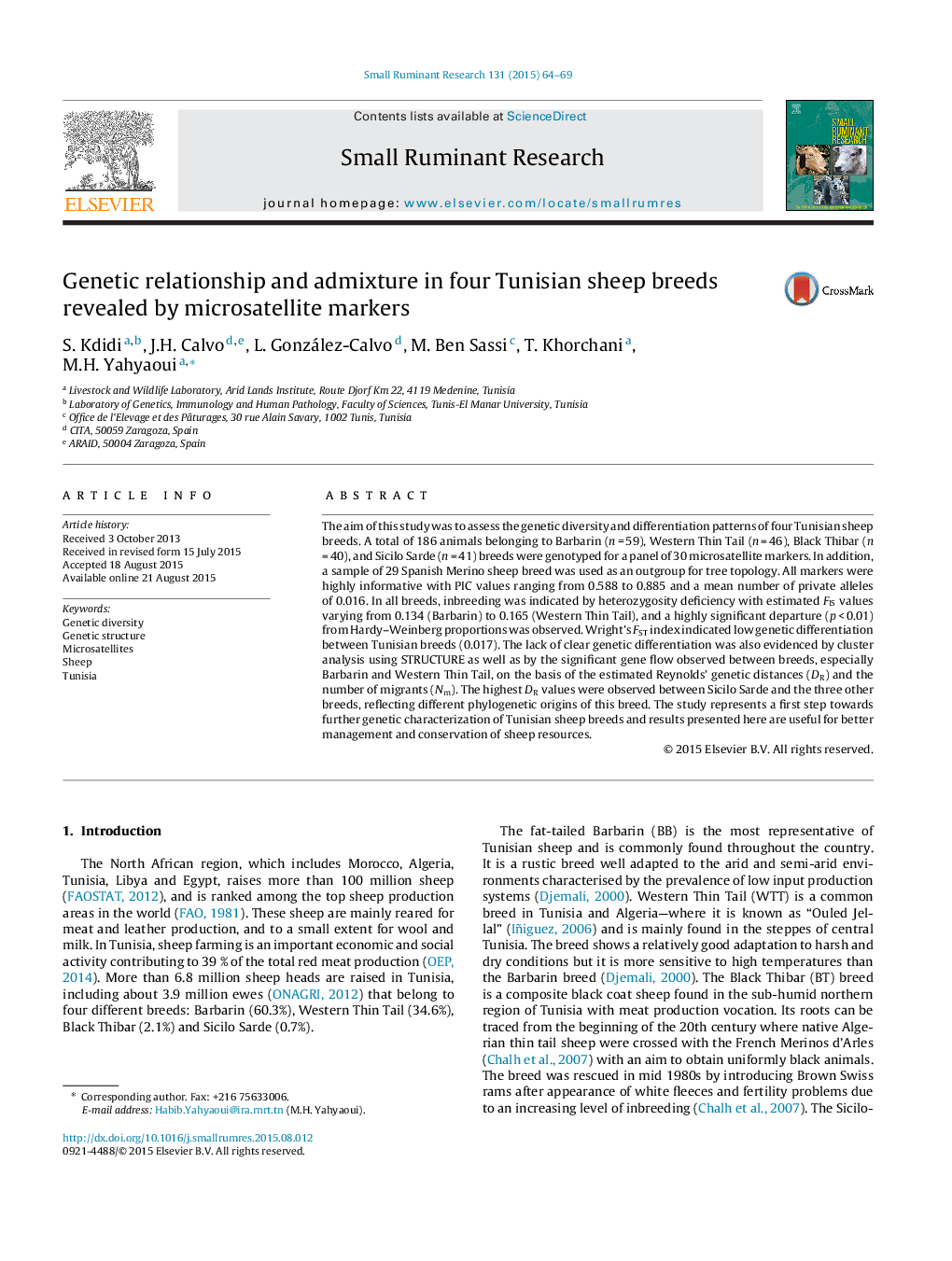| کد مقاله | کد نشریه | سال انتشار | مقاله انگلیسی | نسخه تمام متن |
|---|---|---|---|---|
| 2456726 | 1554361 | 2015 | 6 صفحه PDF | دانلود رایگان |
• There was a relatively high level of genetic diversity among populations.
• Significant levels of inbreeding within the four breeds as indicated by FIS values.
• High level of gene flow was observed between breeds and absence of genetic structure.
• Uncontrolled crossbreeding was the main cause of this genetic admixture.
The aim of this study was to assess the genetic diversity and differentiation patterns of four Tunisian sheep breeds. A total of 186 animals belonging to Barbarin (n = 59), Western Thin Tail (n = 46), Black Thibar (n = 40), and Sicilo Sarde (n = 41) breeds were genotyped for a panel of 30 microsatellite markers. In addition, a sample of 29 Spanish Merino sheep breed was used as an outgroup for tree topology. All markers were highly informative with PIC values ranging from 0.588 to 0.885 and a mean number of private alleles of 0.016. In all breeds, inbreeding was indicated by heterozygosity deficiency with estimated FIS values varying from 0.134 (Barbarin) to 0.165 (Western Thin Tail), and a highly significant departure (p < 0.01) from Hardy–Weinberg proportions was observed. Wright’s FST index indicated low genetic differentiation between Tunisian breeds (0.017). The lack of clear genetic differentiation was also evidenced by cluster analysis using STRUCTURE as well as by the significant gene flow observed between breeds, especially Barbarin and Western Thin Tail, on the basis of the estimated Reynolds’ genetic distances (DR) and the number of migrants (Nm). The highest DR values were observed between Sicilo Sarde and the three other breeds, reflecting different phylogenetic origins of this breed. The study represents a first step towards further genetic characterization of Tunisian sheep breeds and results presented here are useful for better management and conservation of sheep resources.
Journal: Small Ruminant Research - Volume 131, October 2015, Pages 64–69
